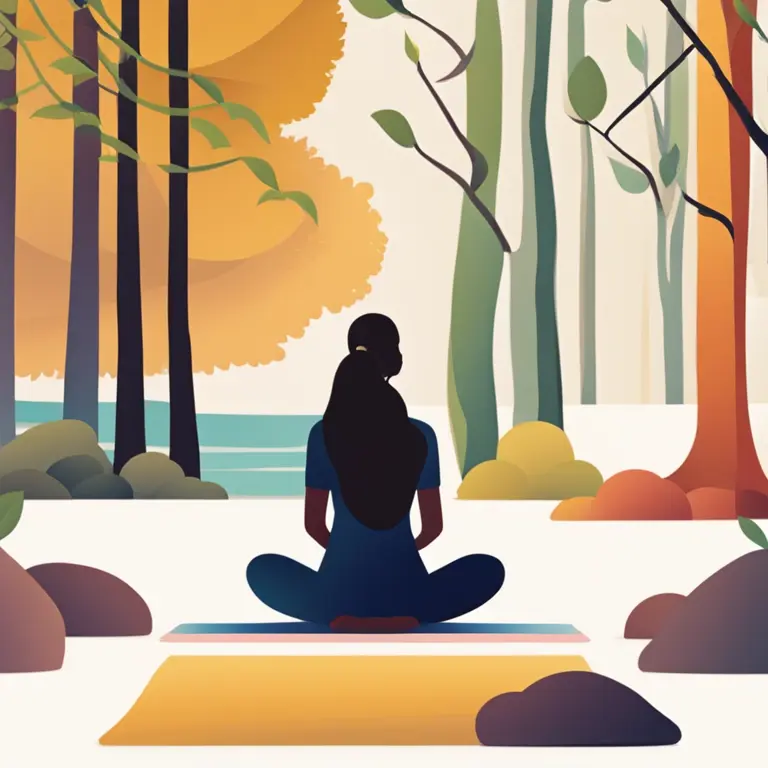
Body and Breath: Pathways to Mindfulness
Delve into the practice of mindfulness through the understanding of body sensations and breath, a cornerstone technique for cultivating presence and awareness.
article by Hina Kurosawa
Introduction to Mindfulness
In the ever-accelerating pace of the modern world, finding respite in the simplicity of our own existence becomes a rare treasure. As we embark on this discussion about mindfulness of body and breath, we enter a realm where each moment is an opportunity for deep connection with ourselves. Mindfulness, as a practice and a state of being, invites us into the present, where the nuanced dance of our breath and the subtle language of our bodies can be fully experienced and honored. It's a foundational element in meditative practice, one that echoes through the halls of time but remains ever-relevant in our contemporary society.

The Role of the Body in Mindfulness
The body serves as a grounding anchor, a tangible reminder of our physical presence in the here and now. By attuning to the sensory experiences our bodies offer—heat and cold, tension and relaxation, discomfort and ease—we open a channel for greater self-awareness. This attentiveness to physical sensations cultivates a gentle acceptance, allowing us to observe without judgment and receive the wisdom our bodies impart. It's this intimate body awareness that can illuminate our mind's tendencies to cling to past regrets or to leap anxiously toward future uncertainties.

The Cadence of Breath
While the body anchors us, the breath offers a rhythmic guide—an innate metronome by which we can synch our consciousness with the present. Inhales and exhales are more than mere biological functions; they are reflections of our emotional and mental states, fluctuating with the ebb and flow of our inner lives. Attending to the breath teaches us subtlety, revealing the delicate shifts that signal deeper changes within. Learning to rest in the cycle of our breathing, we harness a potent tool for centering and calming the mind.

Practical Steps to Mindfulness
Engaging with mindfulness of body and breath starts with intention. Find a quiet space and assume a comfortable posture that enables wakefulness without rigidity. Close your eyes if it helps to reduce distractions, and begin by taking several deep, conscious breaths. As your breathing returns to its natural rhythm, turn your attention to the body—each limb, the curve of the spine, the softness of the belly. As thoughts arise, acknowledge them, and then gently guide your focus back to the sensations in your body and the breath’s gentle flow.

Integration into Daily Life
While formal sitting meditation greatly benefits mindfulness practice, the true art lies in weaving mindfulness into the fabric of daily life. Whether you're eating a meal, having a conversation, or engaging in exercise, bringing awareness to the body and breath serves as a touchstone for presence. The singularity of focus, the depth of breath—it's these markers that remind us to fully inhabit the present moment, regardless of the task at hand. Through consistent practice, mindfulness of body and breath evolves from a scheduled exercise to an effortless undercurrent of daily existence.
Published: 1/18/2024
Modified: 1/18/2024
More predictions
Come back here soon to learn more about yourself and your future


A Short Guide to Mindfulness Meditation
Embark on a journey of self-awareness and tranquility with this comprehensive guide to mindfulness meditation.


The Connection Between Meditation & Mindfulness
Discover the relationship between meditation and mindfulness, and how these practices contribute to mental clarity and inner peace.


Mindful Teaching: Meditation Practices for Educators
Discover the benefits of mindfulness meditation for educators seeking balance, enhanced concentration, and emotional wellbeing in a demanding profession.